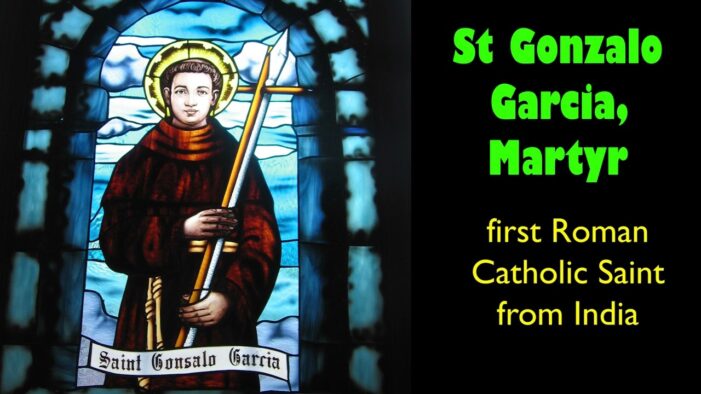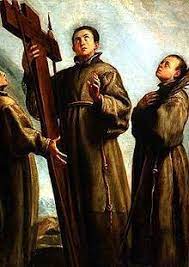Gonsalo Garcia is a name that may not be familiar to many people, but his legacy as the first Indian Catholic missionary to be martyred in Japan is one of great significance.
He born on Feb. 5, 1556 in Agashi village in western India’s Vasai (formerly Bassein) area. His father was a Portuguese soldier stationed at Bassein Fort and his mother, a Konkani-speaking Indian.
His parents were of mixed Indian and Portuguese descent, and they raised him in the Catholic faith.
While assisting at the Church of the Holy Name of Jesus at Bassein, he developed a friendship with Jesuit Father Sebastian Gonsalves, who eventually became his lifelong mentor and guide.
Gonsalo wanted to become a Jesuit. But he could not as the Jesuits at that time did not accept natives into their society.
He then redirected his attention to doing business and became a successful merchant, well acquainted with people from all walks of Japanese society.
During his visit to Manila, (Philippines) he became familiar with the Franciscan order. He requested to join them and was accepted as a Franciscan lay brother.
When Franciscan Friar Pedro Bautista led a missionary delegation to Japan in 1593, Brother Gonsalo was chosen as the translator.
They worked in Kyoto, Osaka and their presence made some Buddhist priests upset. They appealed to Toyotomi Hideyoshi, the feudal lord, and chief Imperial minister, to expel the missionaries. But Hideyoshi, who was friendly with Christians, refused.
Gonsalo Garcia was able to make a significant impact in Japan through his missionary work. He learned to speak Japanese fluently and worked tirelessly to spread the teachings of the Catholic faith among the local people. He helped to build churches and established a community of believers who were devoted to their faith.
However, an event in 1596 reversed the situation.
A storm forced a Spanish treasure ship to anchor in Kyoto. Its captain Francisco de Olandia boastfully told a Japanese customs agent that the Spanish king had sent the missionaries to influence people to rebel against Emperor Go-Yōzei of Japan and overthrow him. This baseless story enraged the emperor, and he ordered all missionaries in Japan to be arrested and executed.
The Franciscans along with Brfother Gonsalo were arrested on December 8, 1596, jailed, and sentenced to death. On Jan. 5, 1597, they were ordered to walk on foot 600 miles from Kyoto to a hill outside of Nagasaki.
Gonsalo Garcia and his fellow Catholics were subjected to brutal torture and were ultimately sentenced to death by crucifixion. On February 5, 1597, they were led to a hill in Nagasaki where they were publicly crucified. Gonsalo Garcia was the first to be martyred, and he died with the name of Jesus on his lips.
On June 8, 1862, Pope Pius IX canonized Gonsalo Garcia and his co-martyrs, making Gonsalo the first Catholic saint of the Indian subcontinent.
The Diocese of Vasai has named Gonsalo its patron saint and his feast day is celebrated on Feb. 6, when thousands of pilgrims across India flock to pay homage to him.
He is now venerated as the patron saint of Bombay and is remembered for his unwavering faith and dedication to spreading the teachings of the Catholic faith.
Christianity continued to thrive in Japan, and today, it is estimated that there are over 500,000 Catholics in the country. In recognition of their sacrifices, Garcia and his fellow martyrs were canonized by the Catholic Church in 1862, and their feast day is celebrated on February 6th.
Gonsalo Garcia’s story is a reminder of the sacrifices that many early Christian missionaries made in order to spread their faith around the world. His courage and devotion continue to inspire people of all faiths today.



